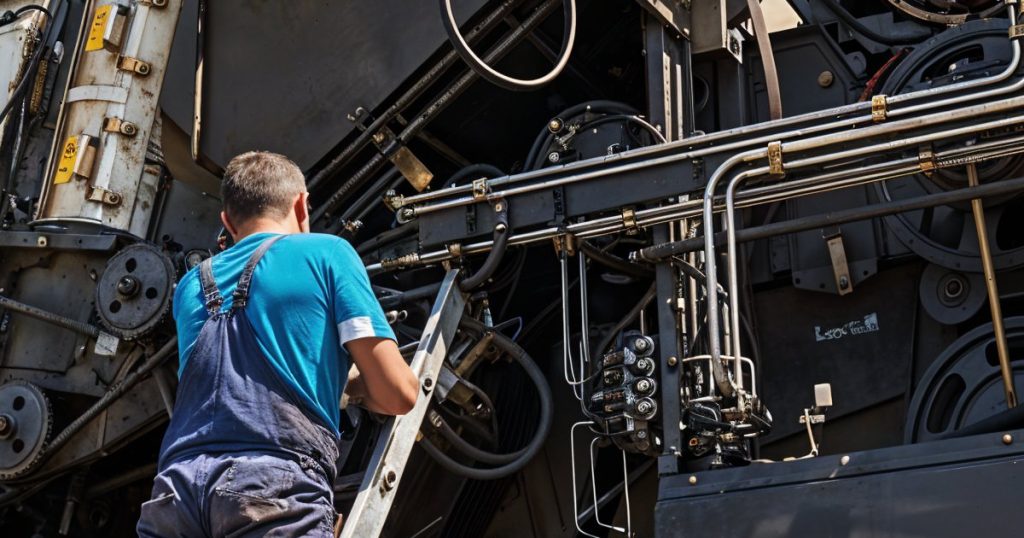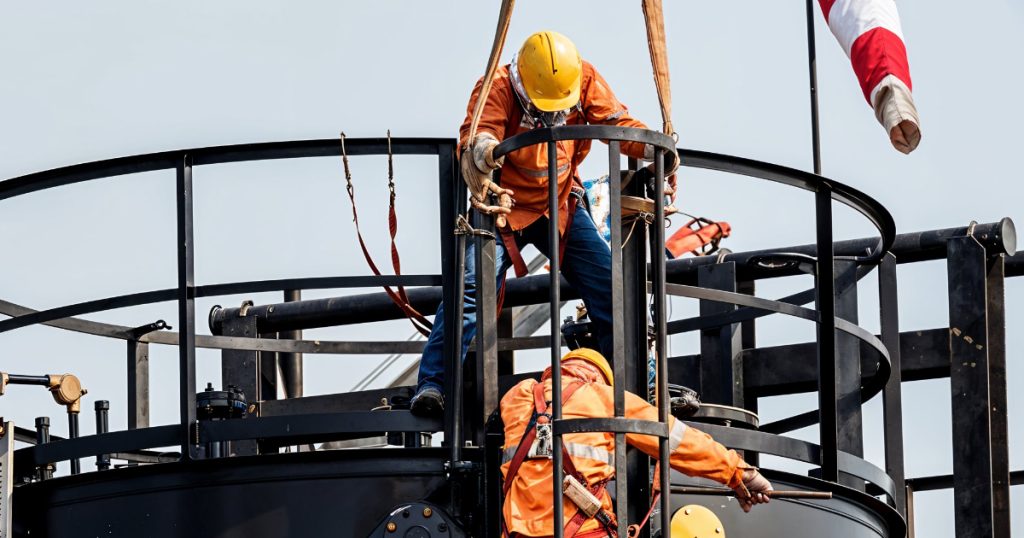In modern manufacturing, Industrial compressor major overhauling plays a critical role in preventing costly downtime and improving plant performance.
Many facilities depend on these machines to power tools, systems, and full production lines. But over time, even the most reliable machines show signs of fatigue – making industrial compressor major overhauling not just a recommendation, but a necessity.
Whether you’re running a Reciprocating, Centrifugal, or Integrally Geared Type Compressor, this in-depth maintenance step keeps your operation safe, efficient, and future-ready.

Let’s break down the warning signs and the powerful reasons why timing a major overhaul is your smartest strategy.
1. Inconsistent Air Output and Loss of Pressure
If your compressor can’t hold consistent air pressure, productivity dips immediately. This could be caused by:
- Valve leakage
- Worn-out seals or pistons
- Cracked cylinders
- Failing intercoolers
An overhaul inspects and restores these internal parts, giving your machine a pressure-boosting reset.
While minor servicing may restore temporary balance, only a major overhaul can reveal the deeper wear patterns that lead to long-term failure.
2. Recurring Shutdowns and Frequent Maintenance Calls
When small breakdowns become routine, it’s not just bad luck – it’s your system signaling internal decline. If you’ve had to:
- Replace the same parts repeatedly
- Call for emergency fixes more than once per quarter
- Pause operations unexpectedly
You’re due for Compressor overhauling annual maintenance at minimum – or a complete overhaul depending on system age.
Overhauls address not just worn parts but misalignments, buildup, overheating patterns, and oil leakage – all of which contribute to costly breakdown cycles.
3. Noticeable Noise or Vibrations
Unusual sound is your compressor’s way of screaming for help. If you’ve heard:
- Metallic rattling
- Low-frequency humming
- Sudden changes in volume
Then bearings, rotors, or mounting assemblies could be worn or loose. In systems like an Integrally geared type compressor, misalignment across multiple stages magnifies risk and repair cost.
A full overhaul realigns, rebuses, and rebalances internal mechanisms to restore smooth, vibration-free operation. Explore our Rotary Equipment Services for complete overhaul solutions.
4. Escalating Energy Bills with No Output Change
Compressors are among the most power-hungry equipment on your floor. When components degrade, efficiency tanks. That means:
- Motors run longer
- More pressure is needed to reach setpoints
- Heat increases energy drain
In order to reduce monthly expenses and environmental stress, a smart compressor overhauling maintenance removes accumulation, replaces old filters, resets air paths, and aids in restoring system efficiency.
5. High Oil Use and Contamination Risks
Sudden changes in oil levels, unusual exhaust smells, or signs of oil around the unit are all red flags. They often result from:
- Worn piston rings
- Cracked housing
- Faulty gaskets
Unattended oil leaks cause contamination, loss of lubrication, and even fires in extreme cases. An overhaul identifies all leak points and reconditions the housing – reducing downtime and environmental hazards.
6. Poor Air Quality and System Moisture
A neglected compressor often introduces:
- Rust
- Condensation
- Oil particles
- Micron-level debris
That’s especially dangerous for operations involving food, pharma, or electronics.
This is where major overhauls shine – they allow complete internal cleaning, separator replacement, and filter reconfiguration to ensure your air system stays dry and contaminant-free.
7. Exceeding OEM Operating Hours or Cycles
Most industrial compressors have fixed life cycles defined in operating hours or duty cycles. For example:
- Centrifugal Compressor units often require major overhaul every 24,000–30,000 hours
- Reciprocating compressor types may need it even sooner under heavy use
Ignoring OEM intervals means you’re relying on luck instead of engineering. Overhauling based on usage, not failure, extends machine life and helps predict future maintenance accurately.
Routine inspections are helpful, but skipping a timely industrial compressor major overhauling increases the risk of failure across systems.
Read our full guide on Compressor Overhauling Maintenance Strategy for planning tips.

Frequently Asked Question (FAQs)
What is the major overhauling of compressor?
It’s a full teardown and rebuild of the compressor. Technicians clean all components, replace critical wear parts like seals, bearings, and gaskets, and reassemble the system to OEM standards.
What is the major cause of compressor failure?
Most failures come from ignored wear and tear, delayed maintenance, overheating, or lubrication problems. These issues accumulate silently and are often only caught during major overhauls.
What are the three stages of compressor operation?
- Suction – Atmospheric air is drawn into the cylinder
- Compression – Air is pressurized
- Discharge – Pressurized air is pushed to the storage or distribution system
This applies across reciprocating, rotary, and centrifugal models.
How to fix a stuck compressor?
A stuck compressor may be caused by electrical faults, lubrication failure, or mechanical binding. Here’s how to troubleshoot it:
- Check the power supply: Make sure your circuit breakers, fuses, and voltage levels are stable.
- Inspect the motor: Overheating or damaged windings can cause startup failure.
- Assess oil/lubrication: Lack of lubrication can seize the crankshaft or rotor.
- Disassemble carefully: If the issue is mechanical, components like pistons or rotors may need cleaning or replacing.
Pro tip: If you face repeated lockups, your system likely needs Industrial compressor major overhauling to address deeper wear and misalignments.
What is the reciprocating air compressor’s operating principle?
A reciprocating compressor works like a piston engine, converting rotary motion into linear compression:
- Intake stroke: Air enters the cylinder when the piston moves down.
- Compression stroke: The piston moves up, compressing the air.
- Discharge: Compressed air is pushed into the storage tank or delivery system.
This method creates high pressure, making it ideal for intermittent-use applications.
Common Questions:
- Q: Is it energy efficient?
Only in short bursts. For continuous operations, centrifugal types are better. - Q: What fails most often?
Piston rings, valves, and crankshafts require regular inspection and maintenance. - Q: What does it need during overhauling?
Full seal replacements, valve tuning, and cylinder re-machining are common during major servicing.
How long does a compressor overhaul take?
Typically, 3-7 days depending on type, condition, and parts availability. More time may be needed for complex configurations with integrally geared stages.
Can I skip major overhauling if I do monthly maintenance?
No – routine maintenance doesn’t inspect deep component wear, alignment, or efficiency loss. Think of it like a car: changing the oil helps, but engine rebuilds are still necessary after enough mileage.
Before You Skip Another Service… Read This
Major rebuilding an industrial compressor is a business decision as much as a mechanical one.When planned correctly, it prevents catastrophic failures, boosts energy efficiency, and helps teams budget better for maintenance. Instead of reacting to problems, smart plants prepare for them.
Because in today’s competitive landscape, uptime isn’t optional – it’s everything. Explore how our solutions go beyond overhauling on the homepage to power long-term plant efficiency.
